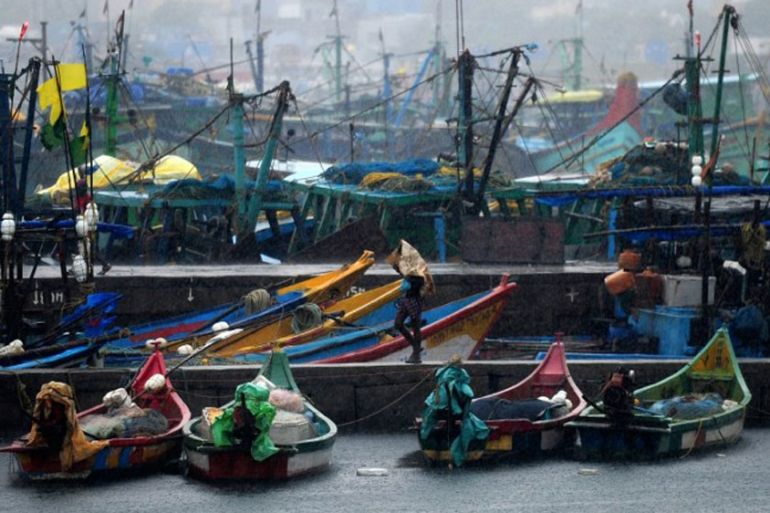Tropical Cyclone Roanu puts Bangladesh in its sights
The first cyclone of the monsoon season is battering the Indian coast as it heads north to Bangladesh.

Before it was even a proper cyclone, this cluster of mighty thunderstorms caused massive flooding and fatal landslides in Sri Lanka. The rescue efforts are continuing on the island and after a day or two of relatively dry weather, the thundery showers typical of this time of year will return.
Cyclone season
Water temperatures in the Bay of Bengal are above the long-term average by at least 1 degree Celsius, pushing immense amounts of potential energy into the storm during the first of two short cyclone seasons in South Asia. These seasons coincide with the incoming and outgoing southwest monsoon.
Keep reading
list of 4 itemsPhotos: Heavy rains, lightning in Pakistan kill at least 50 people
Inside the pressures facing Quebec’s billion-dollar maple syrup industry
Coral reefs around the world experiencing mass bleaching, scientists say
As the rain clouds left Sri Lanka on Tuesday, heading for Tamil Nadu, the warm water beneath gave the boost needed to start proper circulation. The first stage of cyclone development was achieved and this tropical depression was classified as such by the Indian Meteorological Department on Tuesday.
Cyclone warnings were issued for Tamil Nadu, Puducherry, and Andhra Pradesh. The system was locally named Cyclone Roanu early on Thursday and is forecast to follow the coast of India past Odisha to make probable landfall in southeast Bangladesh on Sunday morning.
Rainfall totals over Sri Lanka were between 200 and 300mm. In Tamil Nadu, Cuddalore recorded the most rain at 136mm. Fishing boats were confined to port in Chennai as the waves picked up, although coastal winds remained below 30 kilometres per hour.
![Cyclone Roanu's forecast track [JTWC]](/wp-content/uploads/2016/05/470438c668c24501863ed81762d40689_18.jpeg)
Developing threat
As the cyclone strengthens, waves in the Bay of Bengal could reach six metres in height and winds could briefly touch hurricane strength, as defined by the Saffir-Simpson Scale. This would make Roanu a Severe Tropical Cyclone.
The most damaging aspect of a cyclone is the accompanying storm surge. The equivalent of a mini-tsunami, a storm surge follows the cyclone onto the coast. Such a wall of water is unstoppable and causes widespread flooding and damage.
West Bengal and Bangladesh are most prone to these surges, which commonly reach six metres high in the north of the Bay of Bengal.
At the moment, the forecast storm surge is under two metres, but the coasts of northern Andhra Pradesh, Odisha, and Bangladesh can expect gale-force winds and crashing waves.